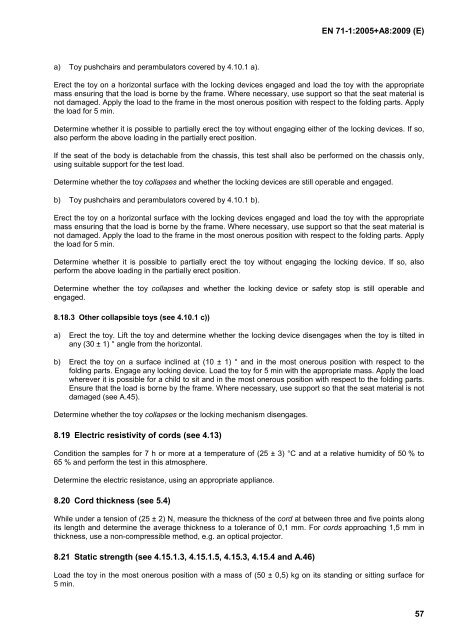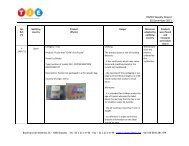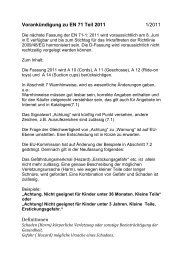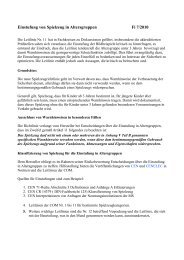You also want an ePaper? Increase the reach of your titles
YUMPU automatically turns print PDFs into web optimized ePapers that Google loves.
a) Toy pushchairs and perambulators covered by 4.10.1 a).<br />
<strong>EN</strong> <strong>71</strong>-1:<strong>2005+</strong><strong>A8</strong>:2009 (E)<br />
Erect the toy on a horizontal surface with the locking devices engaged and load the toy with the appropriate<br />
mass ensuring that the load is borne by the frame. Where necessary, use support so that the seat material is<br />
not damaged. Apply the load to the frame in the most onerous position with respect to the folding parts. Apply<br />
the load for 5 min.<br />
Determine whether it is possible to partially erect the toy without engaging either of the locking devices. If so,<br />
also perform the above loading in the partially erect position.<br />
If the seat of the body is detachable from the chassis, this test shall also be performed on the chassis only,<br />
using suitable support for the test load.<br />
Determine whether the toy collapses and whether the locking devices are still operable and engaged.<br />
b) Toy pushchairs and perambulators covered by 4.10.1 b).<br />
Erect the toy on a horizontal surface with the locking devices engaged and load the toy with the appropriate<br />
mass ensuring that the load is borne by the frame. Where necessary, use support so that the seat material is<br />
not damaged. Apply the load to the frame in the most onerous position with respect to the folding parts. Apply<br />
the load for 5 min.<br />
Determine whether it is possible to partially erect the toy without engaging the locking device. If so, also<br />
perform the above loading in the partially erect position.<br />
Determine whether the toy collapses and whether the locking device or safety stop is still operable and<br />
engaged.<br />
8.18.3 Other collapsible toys (see 4.10.1 c))<br />
a) Erect the toy. Lift the toy and determine whether the locking device disengages when the toy is tilted in<br />
any (30 ± 1) ° angle from the horizontal.<br />
b) Erect the toy on a surface inclined at (10 ± 1) ° and in the most onerous position with respect to the<br />
folding parts. Engage any locking device. Load the toy for 5 min with the appropriate mass. Apply the load<br />
wherever it is possible for a child to sit and in the most onerous position with respect to the folding parts.<br />
Ensure that the load is borne by the frame. Where necessary, use support so that the seat material is not<br />
damaged (see A.45).<br />
Determine whether the toy collapses or the locking mechanism disengages.<br />
8.19 Electric resistivity of cords (see 4.13)<br />
Condition the samples for 7 h or more at a temperature of (25 ± 3) °C and at a relative humidity of 50 % to<br />
65 % and perform the test in this atmosphere.<br />
Determine the electric resistance, using an appropriate appliance.<br />
8.20 Cord thickness (see 5.4)<br />
While under a tension of (25 ± 2) N, measure the thickness of the cord at between three and five points along<br />
its length and determine the average thickness to a tolerance of 0,1 mm. For cords approaching 1,5 mm in<br />
thickness, use a non-compressible method, e.g. an optical projector.<br />
8.21 Static strength (see 4.15.1.3, 4.15.1.5, 4.15.3, 4.15.4 and A.46)<br />
Load the toy in the most onerous position with a mass of (50 ± 0,5) kg on its standing or sitting surface for<br />
5 min.<br />
57








